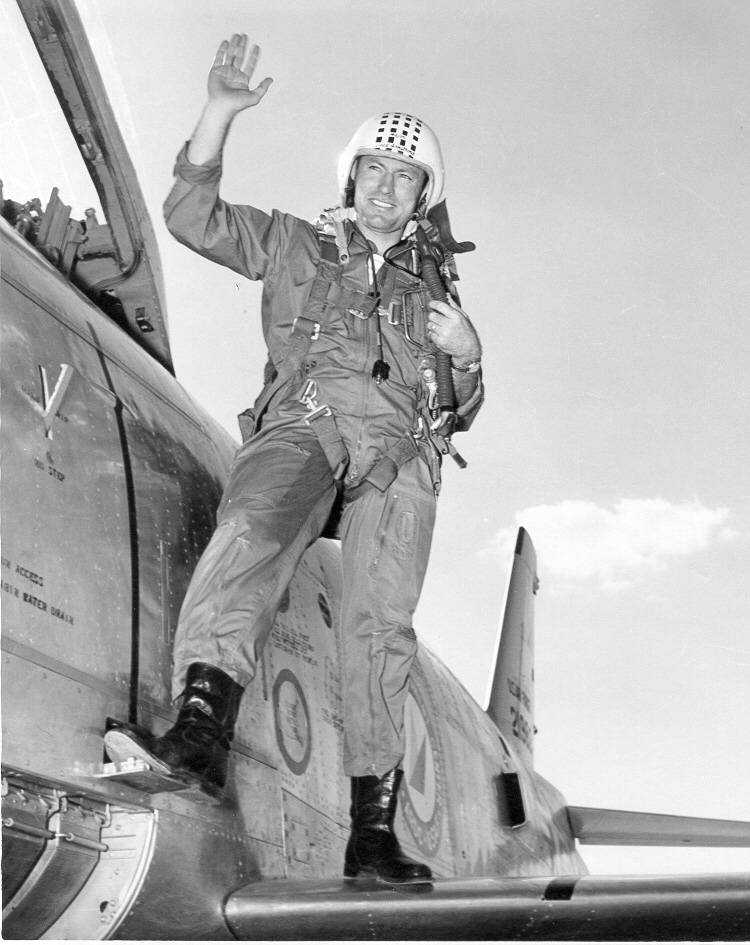

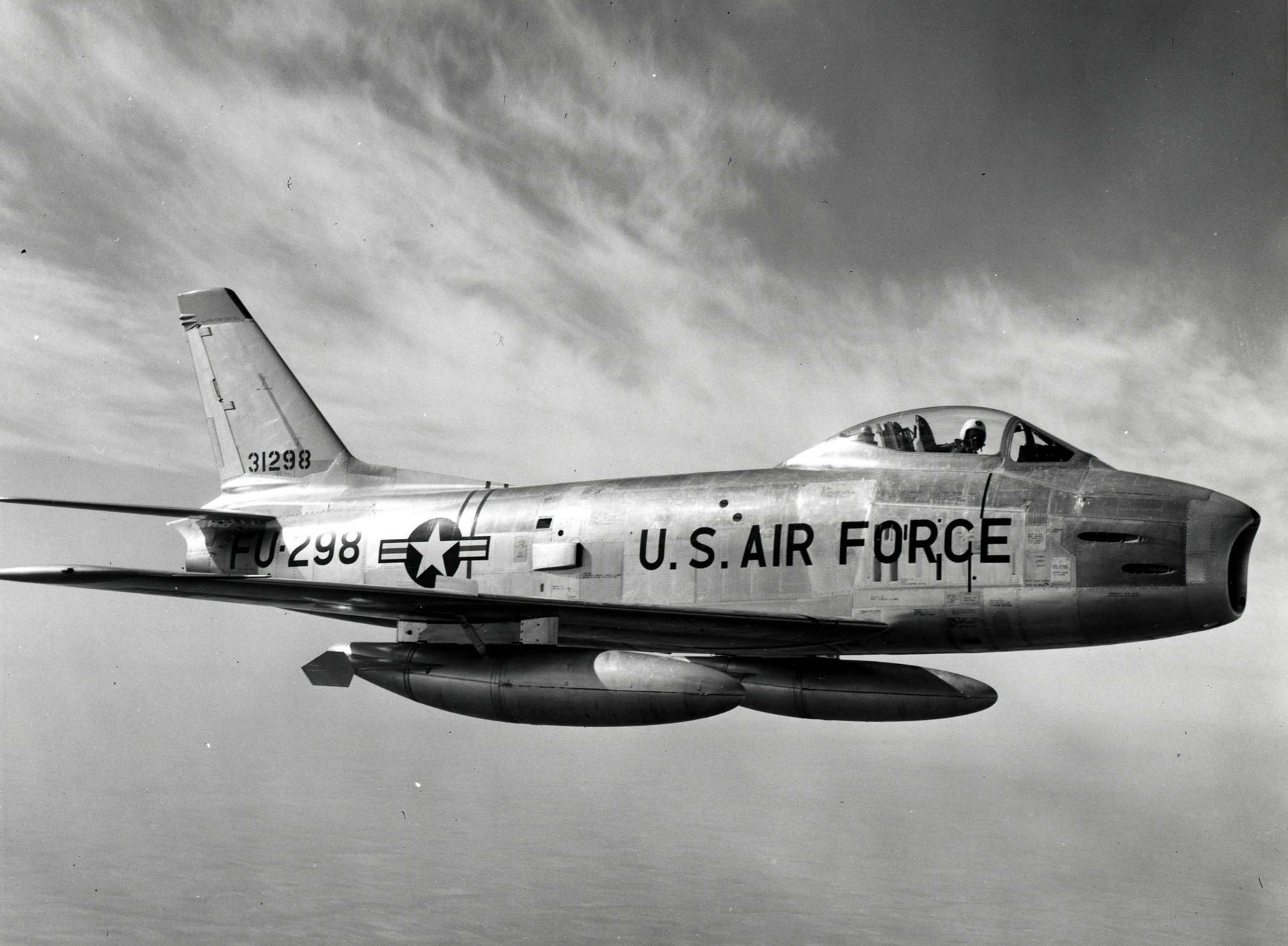

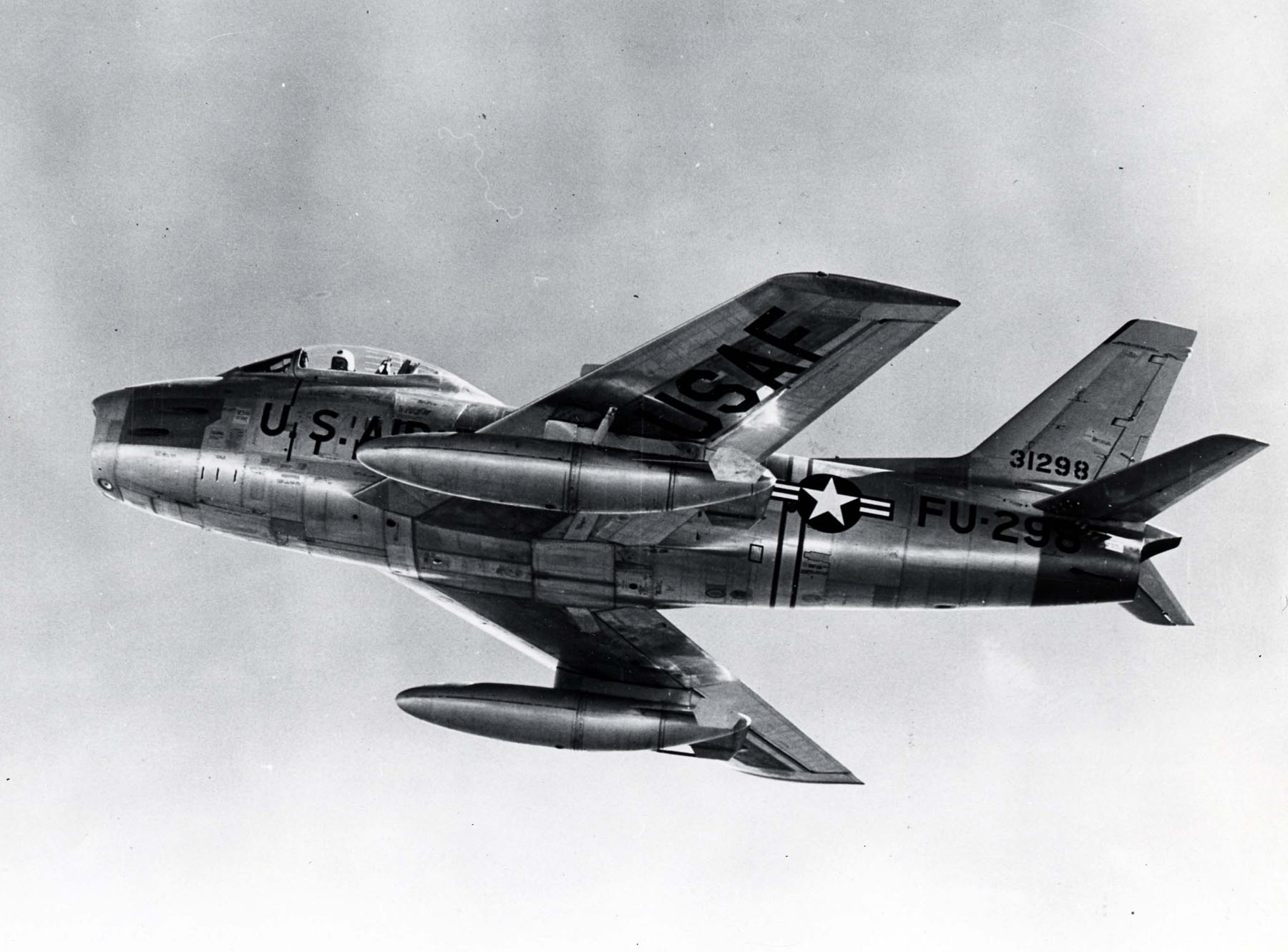
The F-86H Sabre was 38 feet, 10 inches (11.836 meters) long with a wingspan of 39 feet, 1 inch (11.913 meters) and overall height of 14 feet, 11 inches (4.547 meters). Empty weight was 13,836 pounds (6,276 kilograms) and gross weight was 24,296 pounds (11,021 kilograms).

The F-86H had a maximum speed of 601 knots (692 miles per hour/1,113 kilometers per hour) at Sea Level and 536 knots (617 miles per hour (993 kilometers) at 35,000 feet (10,668 meters). The fighter bomber had an initial rate of climb of 12,900 feet per minute (65.53 meters per second) and it could reach 30,000 feet (9,144 meters) in 5.7 minutes. The service ceiling was 50,800 feet (15,484 meters). With a full load of bombs, the F-86H had a combat radius of 350 nautical miles (402 statute miles/648 kilometers) at 470 knots (541 miles per hour (870 kilometers per hour). The maximum ferry range was 1,573 nautical miles (1,810 statute miles/2,913 kilometers).
F-86H Sabres (after the first ten production airplanes) were armed with four Pontiac M39 20 mm autocannon with 150 rounds of ammunition per gun. In ground attack configuration, it could carry a maximum bomb load of 2,310 pounds (1,048 kilograms), or one 12–24 kiloton Mark 12 “Special Store” that would be delivered by “toss bombing.”
The F-86H Sabre became operational in 1954. 473 F-86H Sabres were built before production ended. By 1958 all that remained in the U.S. Air Force Inventory were reassigned to the Air National Guard. The last one was retired in 1972.
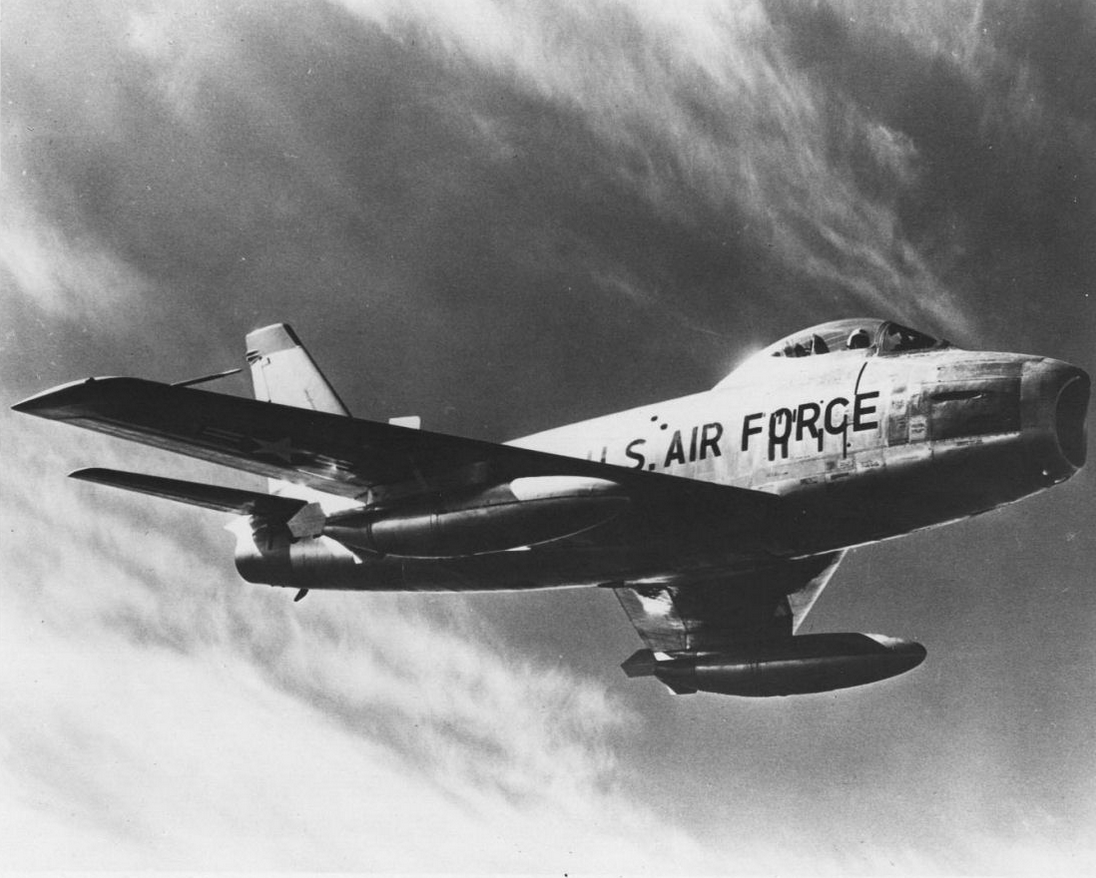
John Leroy Armstrong was born in Orange County, California, 19 July 1922. He was the fourth child of Milton Williams Armstrong, an engineer, and Olive M. Meyer Armstrong. As a child, he was called “Jake.”
Major Armstrong had been a fighter pilot during World War II, flying Lockheed P-38 Lightnings, initially with the 554 Fighter Training Squadron, 496th Fighter Training Group.
On 13 March 1944, Armstrong made a forced landing at North Killingholme when his fighter ran out of fuel.
2nd Lieutenant Armstrong was assigned to the 79th Fighter Squadron, 20th Fighter Group based at RAF Kings Cliffe, Northamptonshire, England, 26 March 1944. He flew the Lockheed P-38 Lightning.
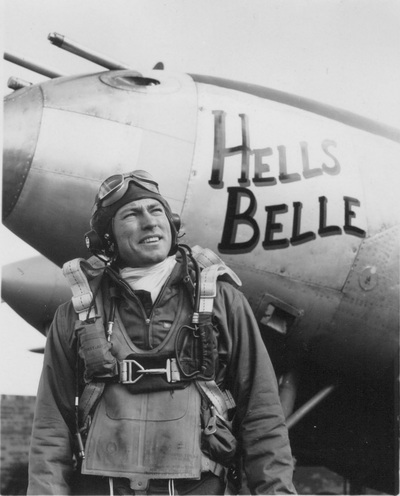
The 79th transitioned to the P-51 Mustang. Armstrong was promoted to first lieutenant 26 June 1944. He was officially credited with having destroyed one enemy Focke-Wulf Fw 190. On 28 August 1944, while flying his 30th combat mission, his North American Aviation P-51D-5-NA Mustang, 44-13791, Guardian Angel, was shot down by anti-aircraft gunfire while he was attacking a railway roundhouse at Bad Greuznach, Germany. Armstrong bailed out but was captured. He was held as a prisoner of war at Stalag Luft I at Barth, Western Pomerania. Armstrong was returned to U.S. military control in June 1945.
Major Armstrong had been awarded the Distinguished Flying Cross, the Air Medal with five oak leaf clusters (six awards), the Purple Heart, the Prisoner of War Medal, World War II Victory Medal, and the European-African-Middle Eastern Campaign Medal.
Two days after setting the speed record, Jack Armstrong was attempting to increase his record speed. The Sabre broke up in flight and Major Armstrong was killed.
John Leroy Armstrong’s remains were buried at the Loma Vista Memorial Park, Fullerton, California, 11 September 1954.
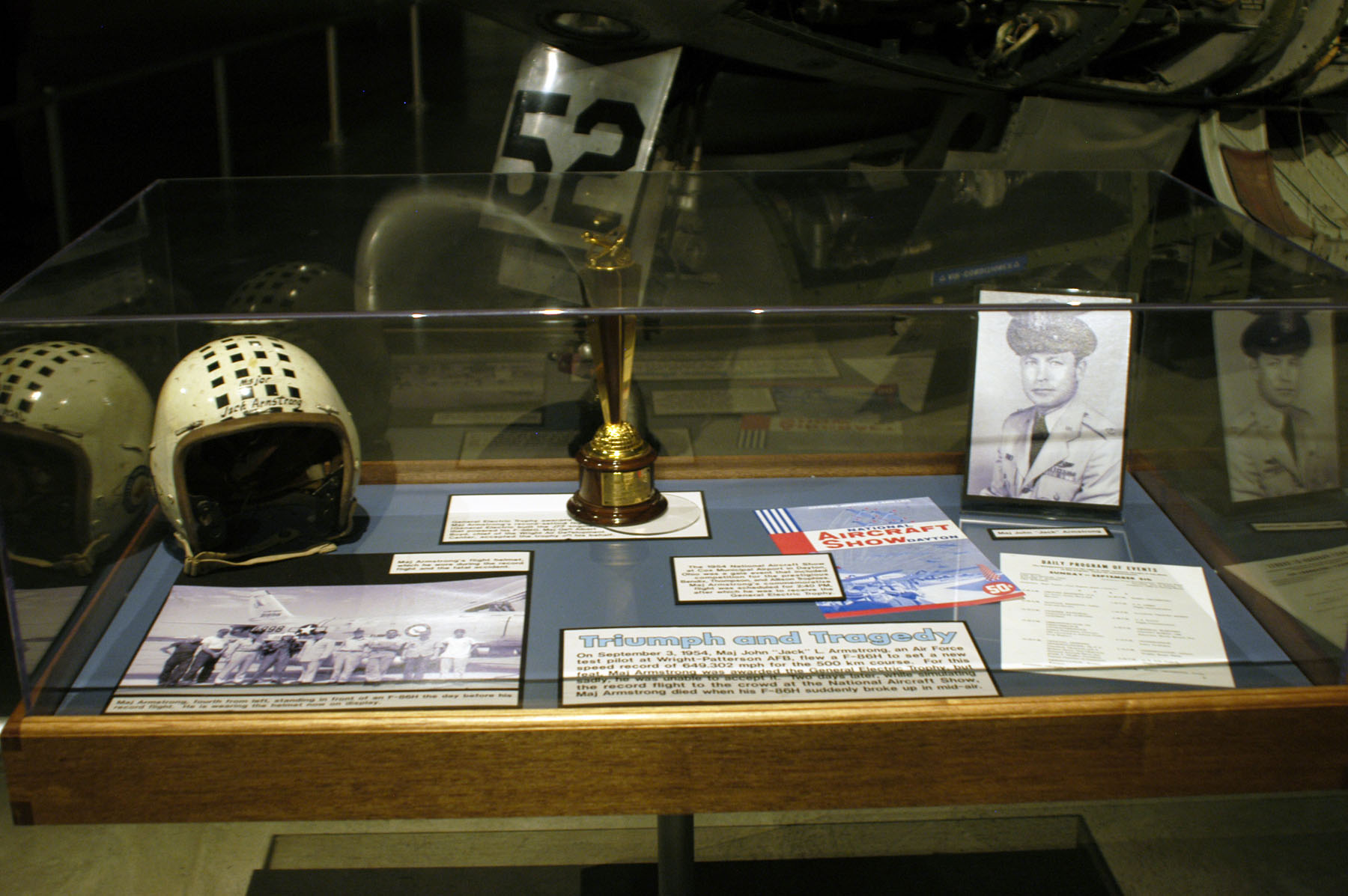
¹ FAI Record File Number 8860
© 2018, Bryan R. Swopes